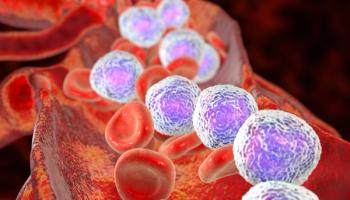
Dr Michael Green: Neurotoxicity, Poor Molecular Response Are Top Investigative Priorities
Investigating circulating tumor DNA is a top priority for patients with diffuse large B-cell lymphoma, noted Michael R. Green, PhD, Department of Lymphoma/Myeloma, Division of Cancer Medicine, University of Texas MD Anderson Cancer Center.
Investigating circulating tumor DNA (ctDNA) for predicting response to chimeric antigen receptor T-cell therapy is a top priority for patients with diffuse large B-cell lymphoma, noted Michael R. Green, PhD, associate professor of lymphoma and myeloma and director, Translational and Laboratory Research, Department of Lymphoma/Myeloma, Division of Cancer Medicine, University of Texas MD Anderson Cancer Center.
Transcript
What unanswered questions need to be addressed for patients with diffuse large B-cell lymphoma?
I think there's 3 things that are immediate next steps from the work that we've described
Number 2: the phenotype that we found to be associated with poor response, and poor molecular response, in particular, was an exhaustion phenotype of CD8 T cells characterized by the co-expression of the LAG-3 [lymphocyte-activation gene 3] and TIM-3 [T-cell immunoglobulin and mucin domain-containing protein 3] co-inhibitory molecules. These are potentially therapeutically targetable, using blocking antibodies that are in early-phase clinical trials. So another immediate next step, which we're pursuing as part of a secret funded study here at MD Anderson, is to see whether LAG-3– and TIM-3–blocking antibodies are able to rescue the function of these exhausted CD8 T cells.
The third would be really validation of not only the association between ICANS [immune effector cell-associated neurotoxicity syndrome] cells and neurotoxicity—we're quite confident about this association, but really, association is not causation—[but] trying to dig in deeper into the causative role that these ICANS-associated cells and monocyte-like cells within the infusion products may have in mechanistically driving neurotoxicity once they're infused into the patient.
Newsletter
Stay ahead of policy, cost, and value—subscribe to AJMC for expert insights at the intersection of clinical care and health economics.













































